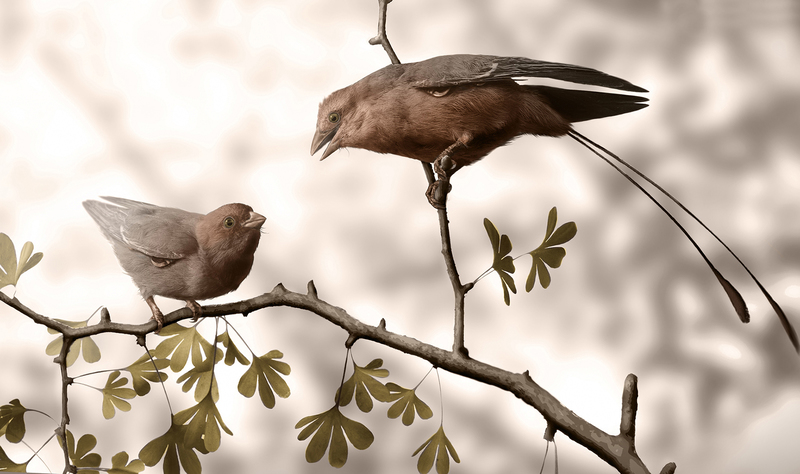New discovery determines gender in fossil birds
11 February 2013
An international team of palaeontologists led by UCT's Professor Anusuya Chinsamy-Turan has discovered a way to determine the sex of 125 million-year-old birds.
Chinsamy-Turan (head of Biological Sciences) conducted the study with Dr Luis Chiappe, director of the Natural History Museum of Los Angeles County's (NHM) Dinosaur Institute; Dr Jesús Marugán-Lobón of Madrid's Universidad Autonóma, Cantoblanco; and Gao Chunling and Zhang Fengjiao of the Dalian Natural History Museum in China.
The discovery is significant, added Chiappe, as it provides the first case of sex identification in an ancient bird. The research paper was published in Nature Communications.
Chinsamy-Turan and the team studied hundreds of Confuciusornis fossils unearthed from rocks deposited at the bottom of ancient lakes in northeast China.
Confuciusornis specimens show remarkable differences in plumage (some had long, almost body-length ornamental tail feathers, others had none), features that have been interpreted as the earliest example of avian courtship. However, the idea that male Confuciusornis birds had ornamental plumage, and females did not, has not been proven until now.
In this study, Chinsamy-Turan and the team found undisputed evidence of a gender difference: the presence of medullary bone.
"Just like modern hens, female Confuciusornis birds that lived 125 million years ago formed this special bone inside their long bones, and then used it to make the calcium-rich eggshells,"she explained. "Finding such tissue - present during a short period of time in reproductively active females - in a specimen that lacked long feathers proved that those birds without ornamental plumage are females.
"This now permits us to assess gender differences in the growth and development of this Mesozoic bird."
But while this discovery offers evidence that early female avian species were essentially using the same physiological strategy to reproduce as their modern counterparts, it also spotlights an important difference in when they reached sexual maturity.
"Now we know that early birds began reproducing way before they were fully grown - a pattern that contrasts with what we know of living birds, which typically begin reproducing after they reach full body-size,"said Chiappe.
 This work is licensed under a Creative Commons Attribution-NoDerivatives 4.0 International License.
This work is licensed under a Creative Commons Attribution-NoDerivatives 4.0 International License.
Please view the republishing articles page for more information.










